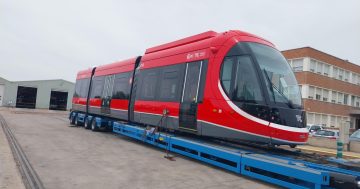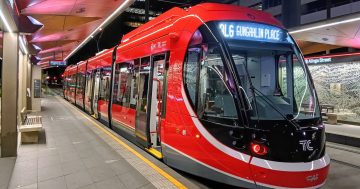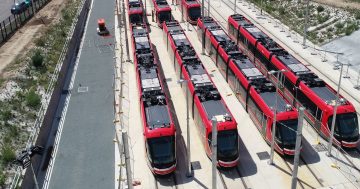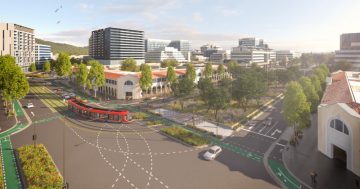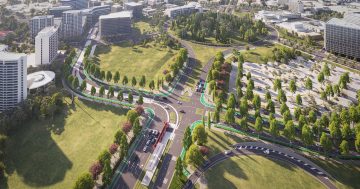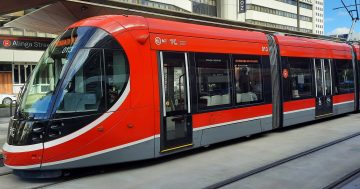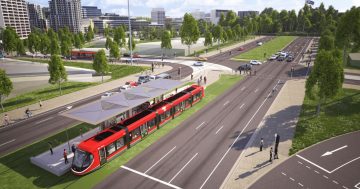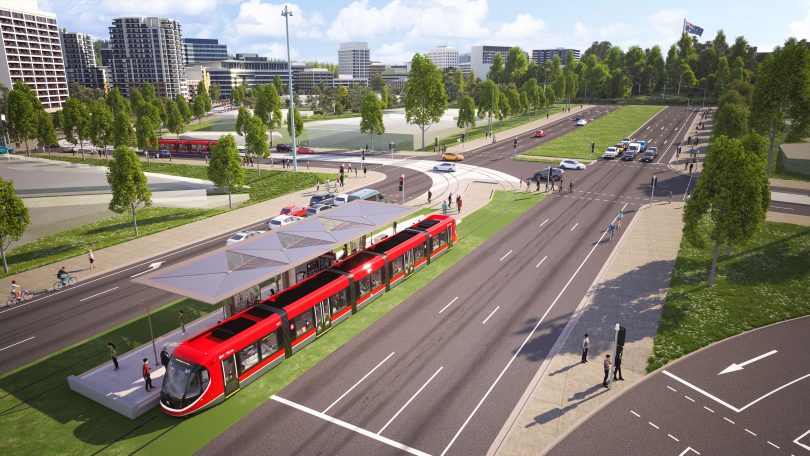
Stage 2A of light rail will be wire-free, but who should bear the costs? Image: Supplied.
School is back across the ACT and with it the onslaught of ever-more technology in our schools. Ian Bushnell recently questioned the growing trend to integrate technology in every area of school life, and many of you agreed that we should consider weaning the kids from their obsession with screens.
“There is no question about their role in learning but there remain plenty of questions about the appropriate age for children to be exposed to technology,” Ian wrote.
“There are the obvious physiological issues of being hunched over a device, such as the aching neck, back and shoulders, sore eyes and headaches or, like television, the way inactivity can lead to obesity and children alienated from the natural world.”
We asked you whether the absorption with technology has gone too far in the classroom.
Your choices were to vote Yes, kids need to be weaned from the obsession with screens. This option received a majority of 62 per cent or 723 votes. Alternatively, you could choose to vote No, it’s an unavoidable part of modern life. This option received 38 per cent, or 447 votes from a total of 1,170 votes cast.
This week, we’re asking whether you think the Federal Government should pay the extra costs associated with wire-free light rail.
The 1.7 km City to Commonwealth Park Stage 2A will be wire-free. Light rail vehicles will charge at the three new stops of City West, West Basin and Commonwealth Park.
That means a higher price-tag as new and existing light rail vehicles will need to be fitted with onboard energy storage with regenerative braking capability. A traction power substation connected to the system at Commonwealth Avenue will need to be built in Commonwealth Park.
The wire-free operation is necessary because light rail will cross into the Parliamentary Triangle, and the National Capital Authority has made it abundantly clear that they won’t allow a catenary operation in the precinct. Given that the future light rail development is likely to run along Adelaide Avenue, the wire-free operation is a pertinent consideration for the network’s ongoing expansion.
But who should meet the costs? If the Commonwealth demands the more expensive option, should they also meet at least some of the costs? Could light rail provide the opportunity for some much needed Commonwealth infrastructure investment in the ACT?
Opinions are divided.
James Balean said: “The issue can be resolved by asking ‘who’s the customer?’ According to the light rail website, ‘Canberra’s Light Rail PPP is between The ACT Government and The Canberra Metro consortium’. The Fed Gov is NOT the customer! The customer pays! It’s just a stakeholder with the right to impose a constraint.”
“I don’t understand why the federal government should pay extra for non-essential aesthetics. The irony is that the poles and overhead wires have a greater retro and heritage aesthetic than the modern hidden wires and components that the wire-free proponents don’t want”, John Hutch commented.
Carl Ostermann asked “Why isn’t the federal government helping foot the bill? The federal government employees do also use the light rail you know”.
What do you think?












